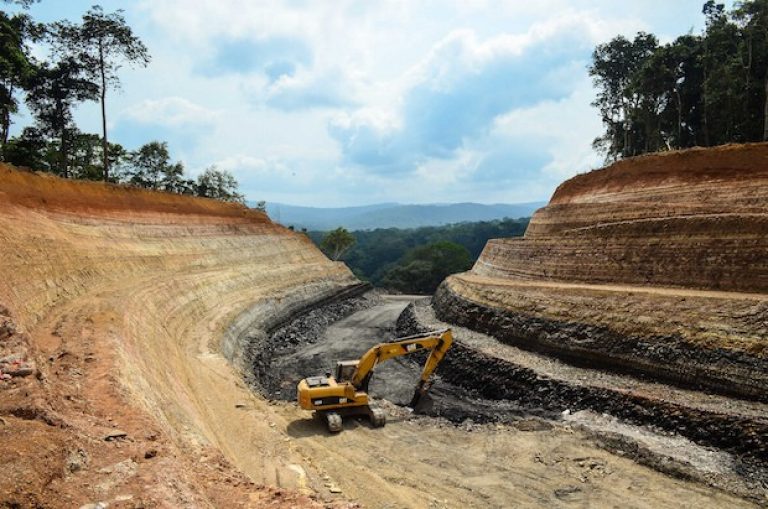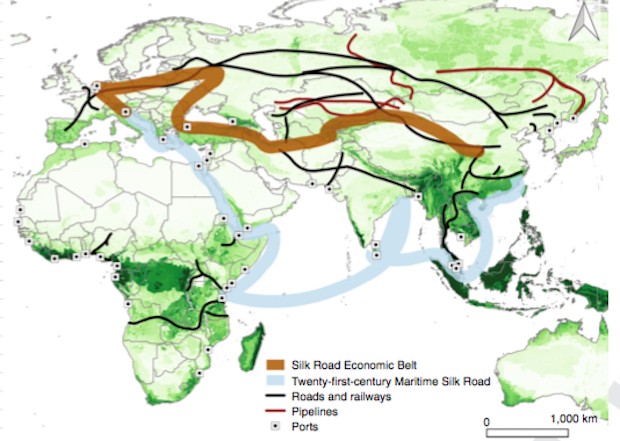China’s $8-trillion Belt and Road Initiative could be a blueprint for responsible development

China’s half-globe-spanning Belt and Road Initiative (BRI) has the potential to be a blueprint for responsible development, provided certain criteria are met.
That’s the position of a paper co-authored by Concordia researcher Jochen Jaeger, recently published in the prestigious journal Nature Sustainability.
Launched in 2013, the BRI is a massive, decades-long program of infrastructure investment and development scheduled to take place in at least 64 countries in Africa, Asia and Europe. By 2049, an estimated $8-trillion will be spent on some 7,000 individual projects. It is being billed as a new “Silk Road.”
Shared responsibility
As it is planned now, the BRI will expand existing land trade routes and develop new deep-water ports across the Indian and Pacific oceans. According to the Chinese government, two-thirds of the planet’s population and one-third of the global economy will be involved.
Jaeger, an associate professor in Concordia’s Department of Geography, Planning and Environment and the graduate program director of Concordia’s Environmental Assessment Program, believes that the international community shares the responsibility of mitigating the BRI’s massive footprint.
“China has the opportunity now to make sure that high-end environmental standards are met,” he says. “However, the international banks financing the BRI have to require high-quality environmental impact assessments as a condition for their loans. If the BRI must happen, it should be used as an opportunity to ensure that this will be done at a high standard.”
 The main trade corridors from and to China, and some of the infrastructure and ports built or planned with Chinese investment in the bri. Environmental value is shown in green. | Image courtesy MERICS.
The main trade corridors from and to China, and some of the infrastructure and ports built or planned with Chinese investment in the bri. Environmental value is shown in green. | Image courtesy MERICS.
The Chinese government is promoting the initiative as a tool to further deepen ties and promote growth among the world’s developing economies. The paper, written by researchers from Canada, the United States, Europe, China and Australia, warns that whatever its intended outcomes, the BRI, if not managed carefully, can result in significant and widespread environmental damage.
A recent report by the World Wildlife Fund states that the BRI’s economic development corridors can affect 1,739 Key Biodiversity Areas, mostly in southeast Asia and tropical Africa. These areas contain some 265 threatened species, 39 of which are critically endangered.
'It would be best to avoid areas with high biodiversity'
An expert in landscape and road ecology, Jaeger has studied the impacts new roads have on local wildlife. He says the BRI could be a launch pad for new norms in road construction and impact mitigation if available scientific evidence in road ecology is actually used in high-quality impact assessments.
“For example, any new project should consider the effect of road mortality on wildlife populations, the barrier effect for animal movement, the spread of invasive species, and increased access to wildlife populations for poachers,” he adds.
“It would be best to avoid areas with high biodiversity in the first place, but the extraction of raw materials such as sand needs to be considered as well, since sand extraction has already exceeded its natural renewal rate and is severely affecting river deltas and coastal and marine ecosystems far away from the constructions sites of the new roads.”
A unique opportunity to raise the bar
Climate change is an important issue as well. He argues that “large investments in pipelines as part of the BRI will increase the rate of exploitation of oil and gas reserves, which will further lock the world into fossil-fuel dependence and high greenhouse gas emissions.”
The paper also calls for funding to support research and monitoring of various environmental effects the BRI will cause. Thorough planning should create a network of protected areas and conserve the ecological corridors affected by the BRI.
The paper concludes that, “China and all nations involved in the BRI should act as environmental stewards by planning infrastructures within rigorous environmental assessment frameworks, and building it in ways that are responsive to the different natural and socioeconomic contexts, at both local and regional scales. The BRI can become a unique opportunity to raise the bar, setting higher standards for best practices that link the design and implementation of infrastructure to environmental protection now and in the future.”
Read the published article, Environmental challenges for the Belt and Road Inititiative.
Contact
Public Affairs
514-848-2424, ext. 5068
patrick.lejtenyi@concordia.ca
@ConcordiaUnews


